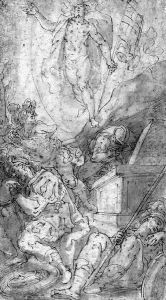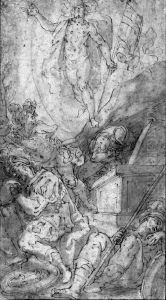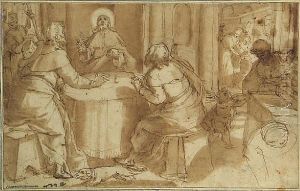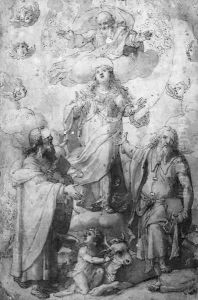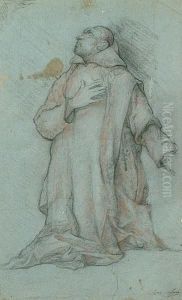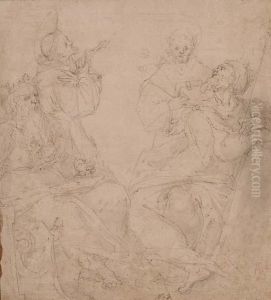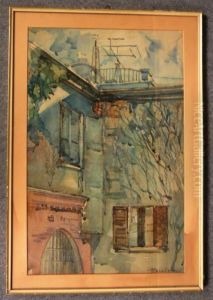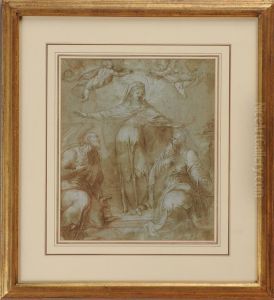Filippo Bellini Paintings
Filippo Bellini was an Italian painter born in 1550 in Urbino, Duchy of Urbino, which is now part of Italy. He is not to be confused with the more famous Bellini family of Venetian painters, including Giovanni Bellini, Jacopo Bellini, and Gentile Bellini. Filippo Bellini's work is much less documented, and he remains a relatively obscure figure in the art historical canon.
Bellini's artistic training and early career are not well-documented, but it is likely that he was influenced by the Mannerist style, which was prevalent in Italy during the 16th century. This style was characterized by artificiality, grace, and elegance, departing from the more naturalistic styles of the High Renaissance.
Throughout his career, Filippo Bellini painted primarily religious subjects. He was active in the Marche region of Italy, where he executed altarpieces and other devotional works for churches. His paintings often featured elongated figures and used vibrant colors, which were typical of the Mannerist aesthetic. Unfortunately, much of Bellini's work has not survived or has been lost over time, which contributes to the difficulty in piecing together a comprehensive understanding of his oeuvre.
Filippo Bellini's death is recorded in 1604. His legacy does not match that of the great masters of his time, and as such, he remains a minor figure in the history of Italian art. Nonetheless, his works that do survive contribute to our understanding of the regional variations of Mannerist painting in Italy during the late 16th century.
